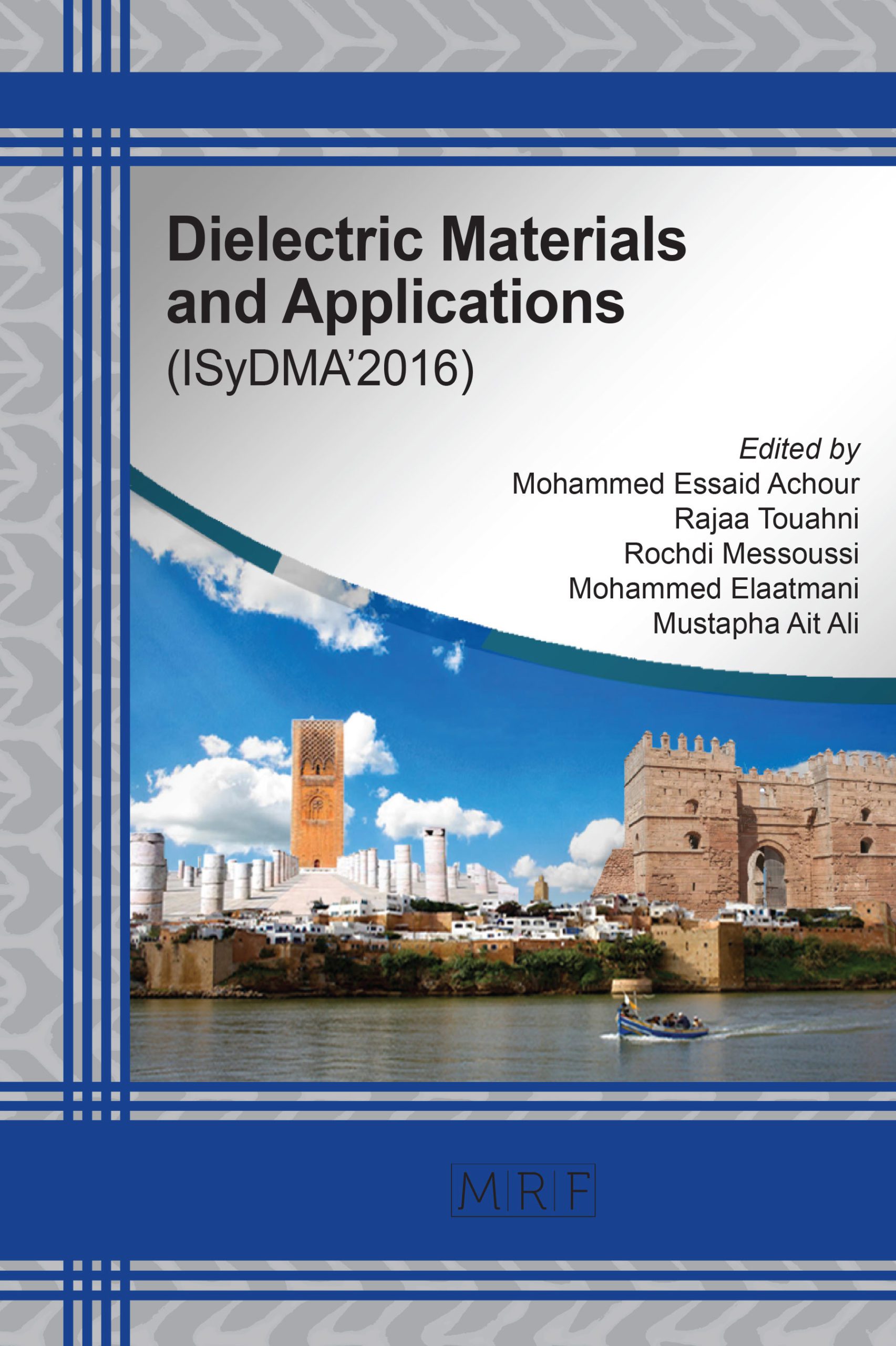B. HADDAD, E. BELARBI, T. MOUMENE, M. RAHMOUNI, D. VILLEMIN
Abstract. In this paper a comparative study of three dicationic ionic liquids (DILs) is presented, these latter are characterized by sharing tetrafluoroborate [2BF4-] as anion and have three different structure piperidinium based cations [R1(CH2)nPPI2+]; namely: bis-methyl piperidinium propylidene [MPrPPI2+], bis-methyl piperidinium butylidene [MBPPI2+]and bis-ethyl piperidinium butylidene [EBPPI2+], their structures were characterized by using 1H, 13C, 19F-NMR and FT-IR techniques. In the frequency range [from 10-2 to 106 Hz] and over the temperature range from [212 to 248 K], real dielectric (ε’), imaginary dielectric (ε”), conductivity (σ) and complex electrical modulus (M*)-frequency (ω) relationships of these three ILs were investigated using dielectric spectroscopy and electric modulus formalism. In this context, the dielectric permittivity, conductivity and the activation energy values are observed to be increased respectively; on one hand, with the spacer length from [MPrPPI2+] to [MBPPI2+] and on the other hand, with the alkyl chain length attached to the cationic from [MBPPI2+] to [EBPPI2+] of the dicationic ionic liquids. Also, the results suggest that the effect of alkyl chain length is more important to the spacer length effect on the dielectric permittivity and conductivity proprieties. Finally, the activation energy is determined in order to understand the relaxation processes in our DILs.
Keywords
Dicationic Ionic Liquids (DILs), Tetrafluoroborate, Dielectric Relaxation Spectroscopy (DRS), Conductivity
Published online 12/10/2016, 4 pages
Copyright © 2016 by the author(s)
Published under license by Materials Research Forum LLC., Millersville PA, USA
Citation: B. HADDAD, E. BELARBI, T. MOUMENE, M. RAHMOUNI, D. VILLEMIN, ‘Study of physicochemical and dielectric proprieties of dicationic ionic liquids: the effect of the nature of the cation’, Materials Research Proceedings, Vol. 1, pp 9-12, 2016
DOI: http://dx.doi.org/10.21741/9781945291197-3
The article was published as article 3 of the book Dielectric Materials and Applications
References
[1] Welton, T. (1999). Room-temperature ionic liquids. Solvents for synthesis and catalysis. Chemical reviews, 99(8), 2071-2084. http://dx.doi.org/10.1021/cr980032t
[2] Kim, J. Y., Kim, T. H., Kim, D. Y., Park, N. G., & Ahn, K. D. (2008). Novel thixotropic gel electrolytes based on dicationic bis-imidazolium salts for quasi-solid-state dye-sensitized solar cells. Journal of Power sources, 175(1), 692-697. http://dx.doi.org/10.1016/j.jpowsour.2007.08.085
[3] Haddad, B., Villemin, D., Belarbi, E. H., Bar, N., & Rahmouni, M. (2014). New dicationic piperidinium hexafluorophosphate ILs, synthesis, characterization and dielectric measurements. Arabian Journal of Chemistry, 7(5), 781-787. http://dx.doi.org/10.1016/j.arabjc.2011.01.002
[4] Haddad, B., Villemin, D., & Belarbi, E. H. (2012). Synthesis, Differential Scanning Calorimetry (DSC) and Dielectric Relaxation Spectroscopy (DRS) Studies of N-methyl-N-propylpiperidinium Bis (trifluoromethylsulfonyl) imide. Environ. Sci, 3, 312-319.
[5] Haddad, B., Moumene, T., Villemin, D., Lohier, j. f., & Belarbi, E. H.( 2016). Bis-methyl imidazolium methylidene bis (trifluoromethanesulfonyl) imide, crystal structure, thermal and dielectric studies. Bulletin of Materials Science, 39, 797-801. http://dx.doi.org/10.1007/s12034-016-1193-z
[6] Sangoro, J. R., & Kremer, F. (2011). Charge transport and glassy dynamics in ionic liquids. Accounts of chemical research, 45(4), 525-532. http://dx.doi.org/10.1021/ar2001809
[7] Saroj, A. L., & Singh, R. K. (2012). Thermal, dielectric and conductivity studies on PVA/ionic liquid [EMIM][EtSO 4] based polymer electrolytes. Journal of Physics and Chemistry of Solids, 73(2), 162-168. http://dx.doi.org/10.1016/j.jpcs.2011.11.012































